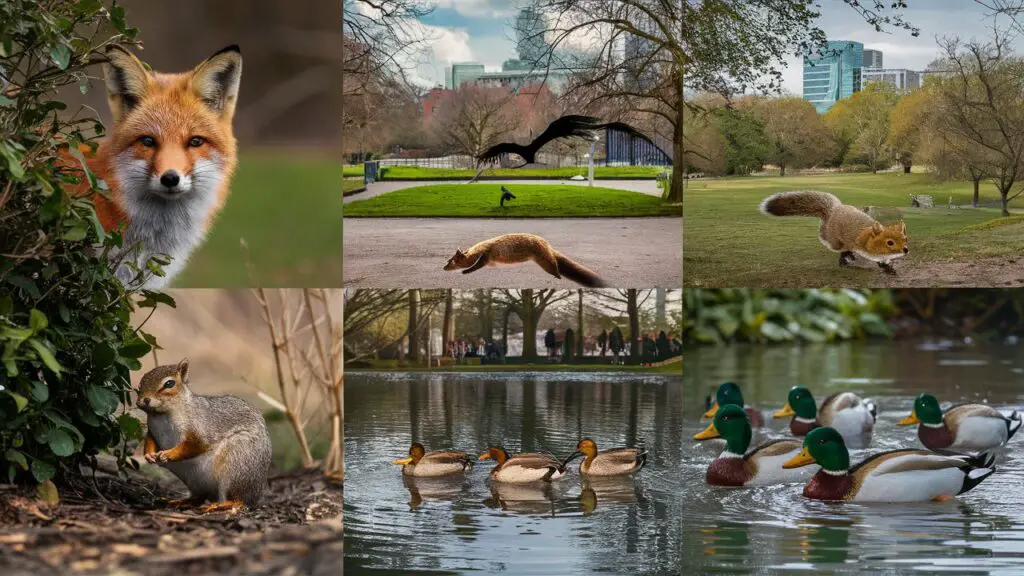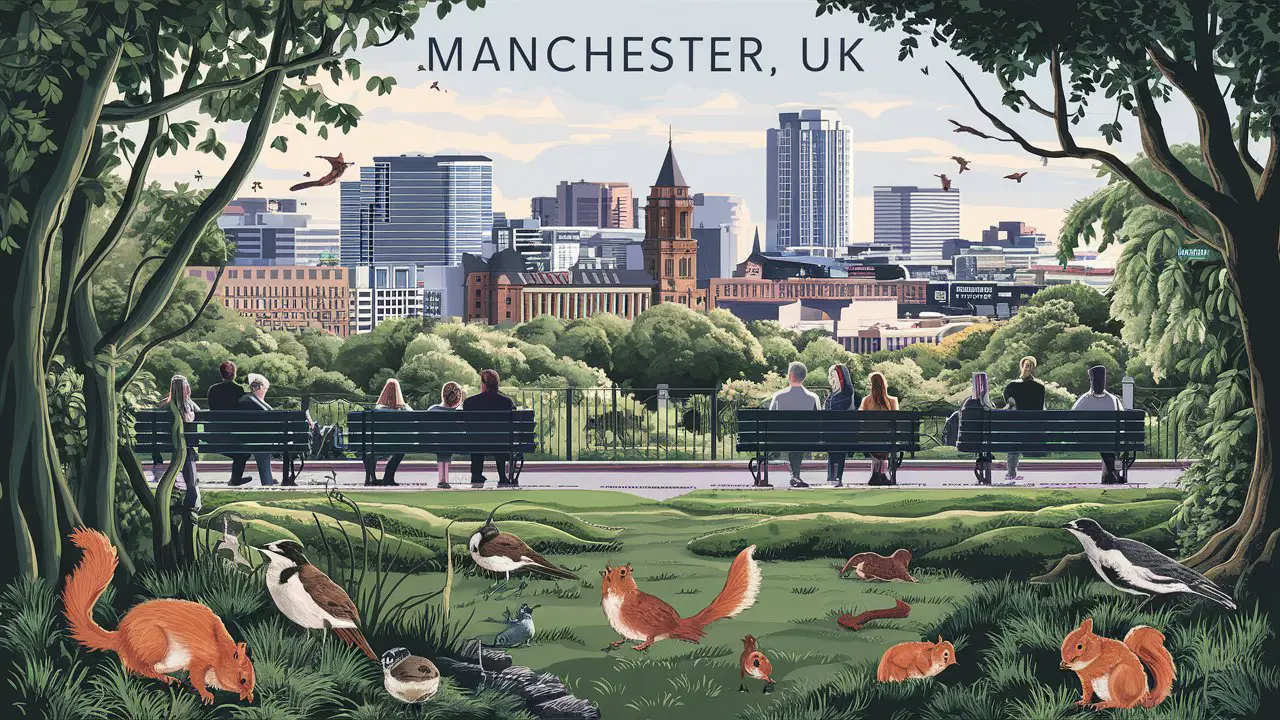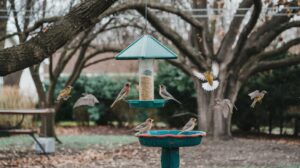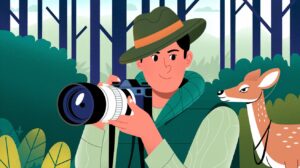As a resident of Manchester, you have likely noticed changes in the city’s approach to wildlife conservation over the past few years. From planting native species along walking paths to daylighting culverted streams, efforts to support local ecology seem to be multiplying. This article provides an overview of the current state of wildlife conservation initiatives in Manchester, detailing key policies, projects, and partnerships making a difference. You’ll learn about the origins of this movement, its effects so far, and what may be still needed to create an urban environment where wildlife can truly thrive. With biodiversity in crisis globally, cities like ours have an opportunity to become leaders in modeling a more balanced relationship between the built and natural worlds.
The Current State of Wildlife in Manchester
Manchester’s urban landscape provides limited suitable habitat for local wildlife.###Green Spaces The city has over 200 parks and green spaces, though many are small, isolated fragments. Some larger green spaces like Heaton Park provide habitat for species like foxes, rabbits, and over 100 bird species. However, connectivity between green spaces is limited, restricting opportunities for wildlife migration and dispersal.
Rivers and Canals
Manchester’s waterways, including the River Irwell and Bridgewater Canal, support wildlife like ducks, swans, coots, and kingfishers. However, water quality remains an issue, as pollutants from roads and outdated sewer systems enter the waterways, damaging ecosystems. Recently, local organisations have made efforts to improve water quality through litter picks, habitat restoration, and campaigns to reduce pollution.
Conservation Efforts
Local wildlife organizations work to protect and enhance biodiversity in Manchester. Projects include creating wildlife corridors, ecological restoration, and community education. For example, City of Trees aims to plant one tree for every resident, helping to link green spaces. The Wildlife Trust for Lancashire, Manchester and North Merseyside works with landowners and volunteers on habitat management and species monitoring. Community groups also work at a local level to improve their local environment for wildlife.
While Manchester faces substantial challenges for wildlife due to its urban nature, the efforts of local organizations and community groups are helping to improve conditions where possible through habitat enhancement and connectivity. With continued and expanded efforts, Manchester’s wildlife may have the opportunity to thrive within this city landscape. By protecting existing habitats, restoring degraded ecosystems, and educating communities, Manchester can become a city where people and wildlife live side by side.
Major Threats Facing Urban Wildlife in Manchester
Habitat Loss and Fragmentation
Habitat loss and fragmentation are two of the biggest threats to wildlife in Manchester. As the city continues to expand, open green spaces are developed for housing and commercial use. This results in loss of habitat for many species and fragmentation of remaining habitat into smaller, disconnected patches. Many species require large, connected areas of habitat to forage, breed, and raise their young. Fragmentation makes it difficult for some species to move between habitat patches to find food, mates, and shelter.
Pollution
Pollution from human activities in cities poses severe risks to wildlife health and survival. Chemicals, plastics, and heavy metals contaminate the air, water, and soil, accumulating in the tissues of animals and plants. Exposure to these pollutants can cause disease, reproductive issues, and even death in wildlife. Light and noise pollution also disrupt natural behaviors and biological rhythms in many species. Excessive artificial lighting, for example, can interfere with navigation, foraging, and reproduction in some animals.
Invasive Species
Invasive plant and animal species are widespread in Manchester and outcompete native wildlife for resources. Foreign plants often spread aggressively, crowding out native vegetation that provides food and shelter for local fauna. Invasive animals directly predate on or outcompete native species, especially birds, small mammals, amphibians and invertebrates. Controlling the spread of invasives is challenging in urban areas but critical to protecting biodiversity.
Lack of Connectivity
The highly developed landscape of Manchester lacks connectivity for most species to navigate between remaining habitat fragments. Connecting spaces like wildlife corridors, green roofs, and urban greenways are needed to facilitate safe travel and allow species to access essential resources. Improving connectivity in cities is key to ensuring the long term survival of wildlife populations in these fragmented environments.
Efforts to Conserve Wildlife in Manchester
Manchester, like most major cities, has faced significant challenges in protecting its native wildlife. However, concerted efforts by local government agencies and non-profit organizations have helped curb habitat loss and protect endangered species within the city limits.
Habitat Conservation Initiatives
Local wildlife organizations have focused on preserving green spaces and waterways that provide shelter and resources for Manchester’s animals. For example, the Wildlife Trust for Lancashire, Manchester and North Merseyside has worked to protect over 60 hectares of wetland habitat along the River Mersey, an important stopover site for migrating birds. The Trust also manages several nature reserves within Greater Manchester that provide a safe haven for otters, water voles, and other species.
Species-Specific Programs
Certain endangered animals like hedgehogs, red squirrels, and farmland birds have been the targets of specialized conservation programs. For example, The Royal Society for the Protection of Birds operates the “Save our Hedgehogs” campaign which aims to raise awareness about threats facing urban hedgehog populations and provides resources to help make gardens and public spaces more hedgehog-friendly. They also run community projects to build and distribute hedgehog homes and encourage residents to keep holes in their fences so hedgehogs can roam between gardens.
Monitoring and Policy Changes
Local government agencies have also taken steps to strengthen protection of wildlife and natural spaces. In 2023, Manchester City Council implemented stricter policies around development near rivers, canals and mature woodlands. They also conduct wildlife monitoring and surveys to identify at-risk species and habitats. The data from these efforts help inform future policymaking and habitat management practices.
While more work is still needed, the collective efforts of Manchester’s public, private and non-profit sectors have succeeded in stabilizing some wildlife populations and ensuring green spaces remain part of the city landscape. Continued cooperation and a shared commitment to conservation will help secure a future for Manchester’s wildlife.
Ways You Can Help Wildlife Conservation in Manchester
Donate to local wildlife charities and conservation efforts
There are many wildlife charities and conservation organizations working to protect endangered species and habitats in Manchester. Donating money or time to groups like the Manchester and District Birdwatching Society, the Lancashire Wildlife Trust, or Red Rose Forest is an impactful way to support their important work. Your contributions help fund initiatives like habitat restoration, wildlife monitoring programs, and community education.
Reduce waste and pollution
You can take steps in your daily life to minimize negative impacts on local wildlife. Reducing single-use plastics, properly disposing of hazardous waste, and decreasing pollution from vehicles are all effective actions. Pick up litter in your neighborhood and consider organizing community clean-ups. Proper waste management and reducing pollution directly benefit Manchester’s animals by preventing ingestion, entanglement, and habitat destruction.
Create wildlife-friendly spaces
Whether you have a small courtyard or a sprawling garden, providing habitat for local wildlife is easy to do. Plant native flowers, shrubs and trees that provide food and shelter for birds, pollinators and small mammals. Install bird feeders, birdhouses, bee hotels and hedgehog homes. Limit the use of chemicals, pesticides and herbicides which can be toxic to animals. Creating more green spaces in Manchester’s urban environment gives wildlife places to feed, breed and find refuge.
Spread awareness about local conservation issues
Educating others in your community about the importance of wildlife conservation and how they can help is a simple way to make a big difference. Start a social media campaign to raise visibility of a particular endangered species or habitat in need of protection. Write letters to political representatives advocating for improved environmental policies and enforcement. Volunteer to give presentations at local schools to inspire future generations of conservationists. Community awareness and action are key to safeguarding Manchester’s natural heritage.
By taking actions big and small, you can significantly contribute to protecting and supporting the wildlife with which we share the city of Manchester. Though the challenges facing conservation in the region are considerable, collective and continued efforts can make a lasting positive impact. Together, we can ensure a sustainable future for Manchester’s animals and green spaces.

Wildlife Manchester FAQs: Your Top Questions Answered
How diverse is Manchester’s wildlife?
Manchester’s wildlife is more diverse than many residents realise. Over 100 species of birds, 25 species of mammals, and a variety of amphibians, fish, and invertebrates inhabit the city. Some of the most common wildlife spotted are foxes, rabbits, squirrels, and a variety of garden birds. However, rarer species such as otters, bats, badgers, and kingfishers can also be found in suitable habitats across the city.
What are the main threats to Manchester’s wildlife?
The two greatest threats to Manchester’s wildlife are habitat loss and pollution. As the city’s population grows, more green spaces are being developed for housing and infrastructure. This results in loss and fragmentation of habitats that many species rely on. Pollution from vehicles, industry, and waste also poses risks to wildlife health and biodiversity. Plastic pollution is particularly problematic, harming many species that mistake plastics for food or become entangled in them.
What is being done to protect wildlife in Manchester?
Several initiatives aim to protect and enhance wildlife habitats in Manchester. The City of Manchester designates over 60 Local Nature Reserves and funds habitat management programs. Non-profits like The Wildlife Trust for Lancashire, Manchester and North Merseyside work to restore habitats, monitor wildlife populations, and promote conservation efforts. Community groups frequently organize litter picks, tree plantings, and wildlife garden projects. Residents can also help by reducing waste, walking or biking instead of driving when possible, and gardening in a wildlife-friendly manner.
How can I help protect wildlife in Manchester?
There are many ways individuals can help protect Manchester’s wildlife:
- Create a wildlife garden with native plants, shelter, and access to food.
- Reduce pollution by walking, biking, and using public transport.
- Participate in community conservation efforts like park cleanups.
- Report wildlife crimes or injured animals to the proper authorities.
- Spread awareness about local wildlife and conservation issues on social media.
- Support organizations protecting wildlife habitats and biodiversity.
- Avoid single-use plastics and properly dispose of waste.
- Keep cats indoors, especially at night, to avoid predation of wildlife.
By making small changes, residents can work together to create a city where wildlife and people can thrive side by side. With the right actions taken now, Manchester can become a greener, more sustainable place for future generations of humans and wildlife alike.
Conclusion
As we reflect on the state of wildlife conservation in Manchester today, it is clear there is still important work to be done. Though progress has been made, continued advocacy, education, and action are essential. The choices you make as an individual matter, whether supporting local conservation organizations or simply being mindful of your impact on green spaces. We all have a role to play in preserving biodiversity for future generations. What steps will you take to be a force for positive change? The wildlife of Manchester are depending on you.





